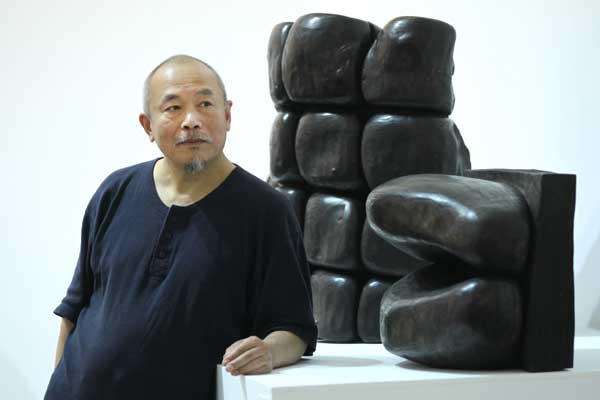 |
| Wang Keping is bringing more than 500 sculptures created over 35 years to Beijing. [Photo by Zou Hong/China Daily] |
Wang Keping says he didn't aspire to become an acclaimed artist. He just wanted a tape player.
His initial motivation to sculpt came after his friend swapped an oil painting he'd created for a tape recorder from a foreign student in the 1970s.
"Western and Cantonese music was penetrating the mainland, and owning a tape recorder was a dream for young people," Wang recalls.
"I thought if I could create something like an oil painting, maybe I could get a tape recorder, too."
Wang still considers himself "an artist outside the art world".
Upon entering his solo exhibition at the Ullens Center for Contemporary Art in Beijing, the 64-year-old sculptor says: "I walked into the wrong room."
This is his first and largest exhibition of his work ever shown on the mainland since he moved to Paris in 1984.
The ongoing exhibition shows more than 50 sculptures he created over the past 35 years.
While Wang exploded in the newborn contemporary art scene in the late 1970s, he only participated in some small exhibitions. But he has been involved in the process from choosing works to curating this big event.
"I'm not an art school graduate. I believe my experience will encourage young, self-taught and glum artists," he says, laughing.
Wang influenced the early contemporary art scene as a founding member of the then avant-garde art group The Stars, co-established by giants like Huang Rui and Ma Desheng.
His iconic works Silence, Idol and Chain celebrate freedom and personal expression.
"We called it The Stars because we wanted to focus on each artist's variety and individuality," he says.
The group staged its first exhibition outside the National Art Museum of China in Beijing in 1979. It shocked society with its rebelliousness and originality.
